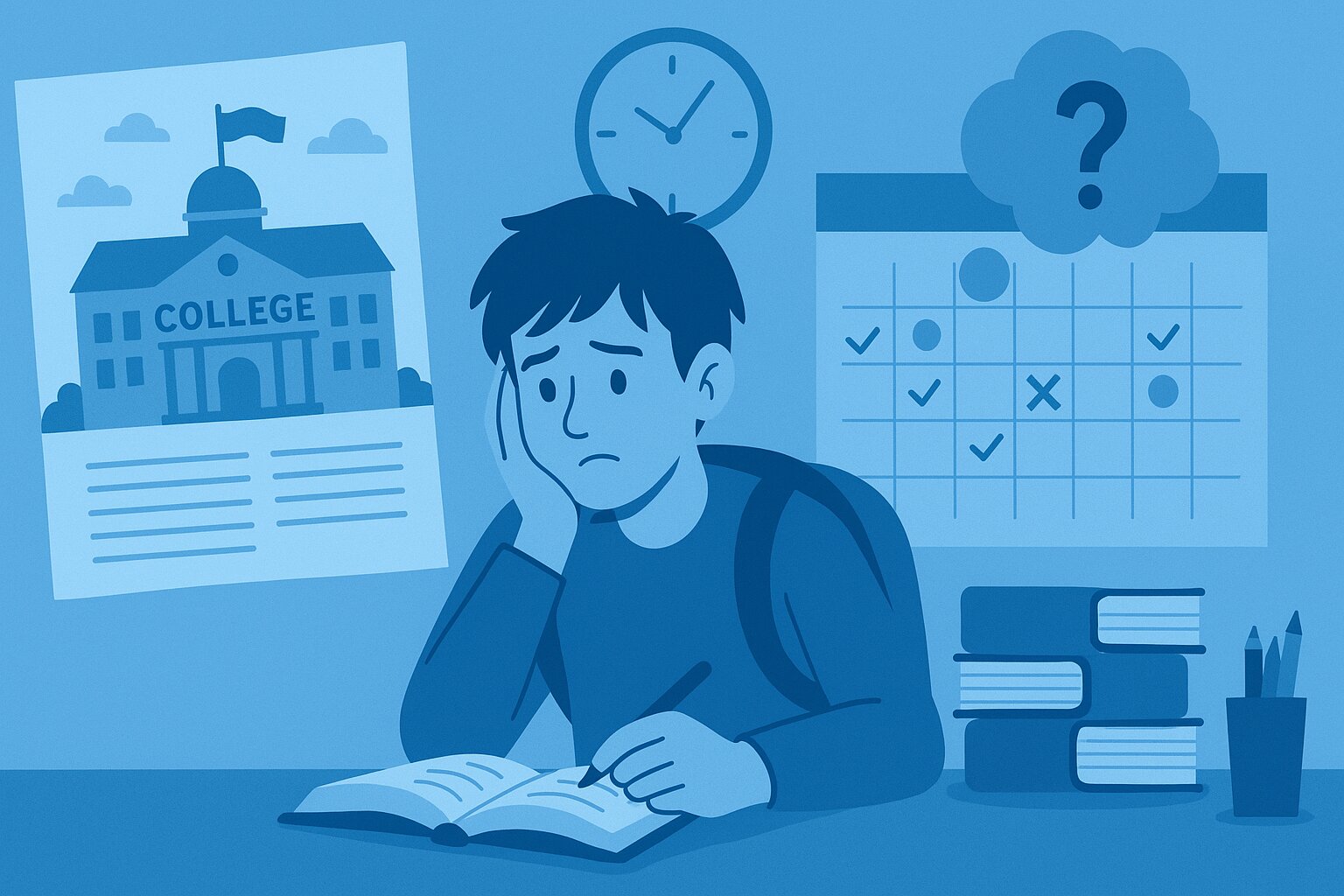The Lead Domino
Living with ADHD can feel like being caught in a constant storm. Car keys are lost, deadlines slip by, and frustration from others mounts. It’s a daily challenge to juggle responsibilities, relationships, and to-do lists when an organization feels like an uphill battle.
This sense of overwhelm can be paralyzing. But instead of trying to fix everything at once, what if you could focus on just one simple routine that sets everything else into motion? A small, deliberate action that gradually creates a ripple effect of positive change.
Enter the lead domino. This is the one habit or routine that, when done consistently, sparks a series of improvements. It may seem small, but it has the power to cut through the chaos and bring a sense of control back into your life.

What Is The Lead Domino?
The lead domino is a key routine that sets off a chain of positive changes. By focusing on one small but impactful routine, you can create improvements across many areas of your life. For those dealing with ADHD or executive function challenges, finding this habit can help break the patterns of disorganization, procrastination, and feeling overwhelmed.
The lead domino isn’t about doing more, it’s about focusing on one action that makes everything else easier to manage.
How to Find Your Lead Domino: Small Steps, Big Impact
When everything feels broken, it’s hard to know where to start. The key is to stop trying to fix it all at once and focus on one routine that can solve multiple problems. Here’s how to identify your lead domino:
- List your challenges: Write down the issues causing the most chaos in your life. Are you constantly procrastinating? Feeling disorganized? Low on energy? Identify your biggest pain points.
- Create one routine: From that list, find one routine that could address several of those challenges. For example, if procrastination and disorganization are at the top of your list, attending weekly office hours might be your lead domino. It builds accountability, keeps you on track, and provides feedback that helps you stay focused.
- Start small with tiny habits: Your lead domino doesn’t need to be a huge, life-altering change. As Stanford researcher BJ Fogg showed with his Tiny Habits method, small steps make a big difference. He began by doing just two push-ups every time he went to the bathroom, and eventually lost 20 pounds. Start with something so small you can’t fail, and let it build momentum.
Automate and move to the next domino: Once your lead domino becomes a habit and feels natural, move on to the next one. Identify another routine that could further improve your day-to-day life. This step-by-step approach prevents overwhelm and leads to lasting change.

Why One Routine at a Time Works
When life feels chaotic, it’s tempting to try to change everything at once. But taking on too much leads to burnout. You can’t fix everything in one go. Instead, focus on just one lead domino that that will cause a ripple effect. Once that routine becomes solid, you’ll start to notice improvements in other areas of your life, and the chaos begins to settle.
Harper’s Story: The Power of Office Hours
Harper, a college freshman, was struggling. She was overwhelmed with assignments, constantly procrastinating, and felt lost in her classes. After talking with a coach, Harper decided to focus on one small routine: attending her professor’s office hours once a week.
At first, it felt like a small step, but attending office hours became Harper’s lead domino. By showing up consistently, she built a relationship with her professor, which gave her the confidence to ask for help when she needed it.
That simple routine provided her with structure, reducing her procrastination because she had a clear deadline for when she needed to discuss assignments. The quick feedback helped her stay on track, improved her focus, and made her more engaged in class.
Over time, Harper’s lead domino transformed her college experience. She became more organized, managed her time better, and felt less stressed about schoolwork. It wasn’t just about getting better grades, her entire approach to school shifted. It all started with that one small routine: attending office hours.

Lead Dominoes for Students, Parents, and Educators
The power of the lead domino applies to everyone. Whether you’re a student, a parent, or an educator, identifying your lead domino can create significant positive changes. Here’s how one routine can unlock benefits across different roles:
As a Student:
- Office Hours: Attending office hours weekly helps build a relationship with professors, reduces procrastination, and improves focus. It also provides accountability and helps you stay organized by giving you clear, consistent feedback.
- 15 Minutes of Movement: A short burst of activity boosts your mood, enhances focus, and improves sleep, which makes studying more productive later in the day.
- 3x per Week Organization: Spending 10 minutes organizing your space three times a week reduces distractions, helps you stay ahead of deadlines, prevents missing assignments, and creates a more productive environment.
- SLANT (Sit up, Listen, Ask and Answer, Nod, Track): This technique teaches students what “paying attention” looks like. It helps you stay focused, participate actively, and better understand the material, leading to improved retention. It’s how I learned to pay attention, and it made a big difference for me in college.
Each of these small routines can address multiple challenges, from improving focus to reducing procrastination and stress.
As a Parent:
- Nightly Walk (Not Asking About School): Taking a nightly walk with your child without discussing school builds a stronger long-term relationship, reduces tension, and creates a calm environment where your child feels comfortable opening up.
- Sunday Night Planning: Setting aside time on Sunday nights to plan the week helps reduce chaos and keep the family organized. It also builds long-term planning skills by training the brain to think ahead. This routine ensures the week starts with clarity and purpose, making it easier for everyone to manage their time and responsibilities.
- Model a Bedtime Routine (Not on Your Phone): Modeling a screen-free bedtime routine not only improves your sleep but also sets a strong example for your kids. Children watch what we do more than they listen to what we say. By showing them how to wind down without screens, you encourage healthier sleep habits that benefit everyone.
For parents, these lead dominoes improve relationships, reduce anxiety, and create more structure at home.

As an Educator:
- Greeting Students at the Door: Welcoming each student with a warm greeting builds rapport and sets a positive tone. While balancing this with the end of the previous class can be tricky, it’s worth the effort. A simple greeting helps reduce behavioral issues and boosts engagement, as students feel valued from the moment they enter.
- Manners Lessons Every Thursday: Teaching manners once a week creates a respectful classroom environment. Many students don’t instinctively know how to behave, but when I started explicitly teaching manners, behavior improved significantly. This simple routine fosters mutual respect and enhances classroom culture.
- Digital Organization Every Friday: Spending 30 minutes at the end of the week organizing your digital workspace reduces mental clutter and sets you up for a smoother start the following week. After implementing this, my students had fewer missing assignments, and I saved time by not having to chase them down.
- Friday Gratitude: Ending the week with a brief gratitude reflection fosters a positive mindset and strengthensthe classroom community. I took a few seconds to express something positive about each student, which noticeably improved behavior and engagement as students felt appreciated.
For educators, focusing on these small routines can transform the classroom environment, improve relationships with students, and reduce stress.

Summary: One Step at a Time to Lasting Change
When life feels overwhelming, it’s easy to think you need to fix everything at once. But real, lasting change happens by focusing on one small habit, your lead domino. Whether you’re a student looking to manage your workload, a parent hoping to reduce stress at home, or an educator seeking to create a more positive classroom environment, finding your lead domino can begin a ripple effect of positive change.
At Untapped Learning, we specialize in helping students, parents, and educators identify their lead domino and build sustainable routines for long-term success. If you’re ready to take control of the chaos and start building positive habits, reach out to Untapped Learning today. Let us help you discover your lead domino and unlock the change you’ve been waiting for.
For More:
Stanford Researcher Tiny Habits
How to Identify Your Lead Domino
Parenting a child who struggles with executive function can be overwhelming, but you don’t have to navigate this journey alone. Let Untapped help!





